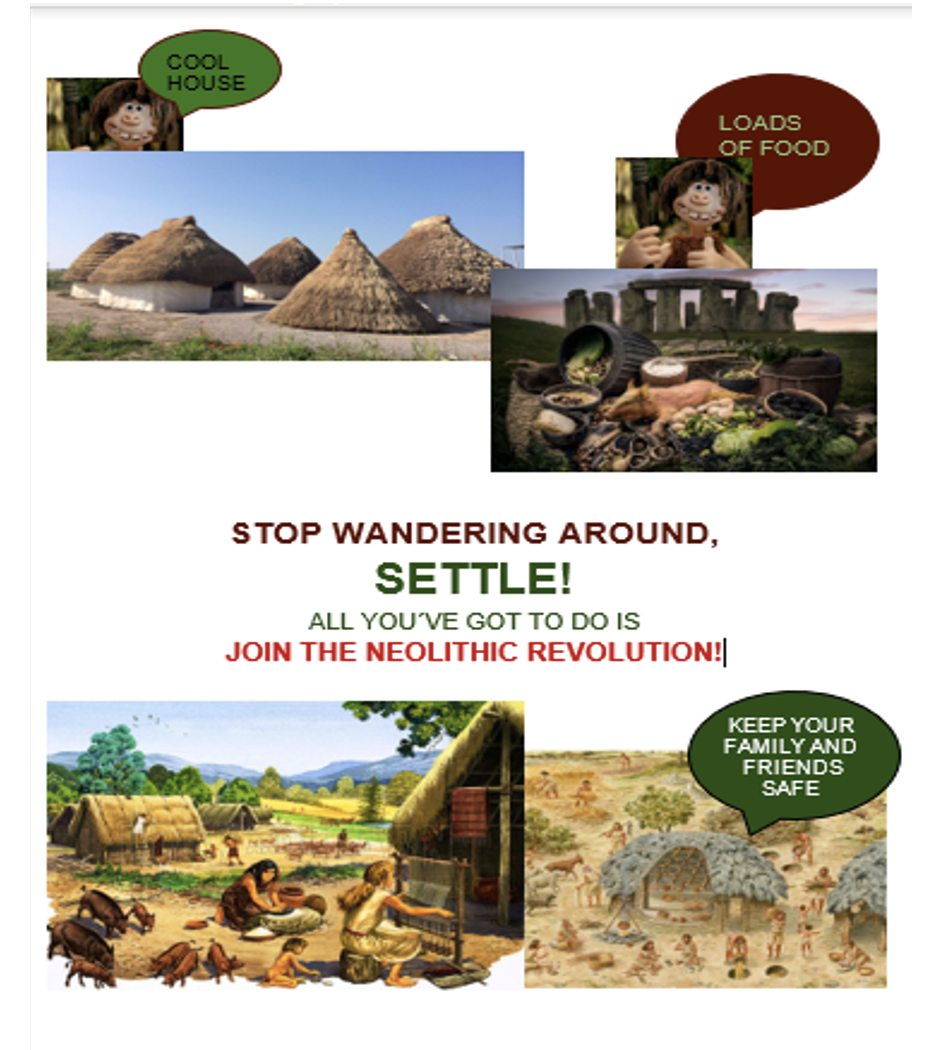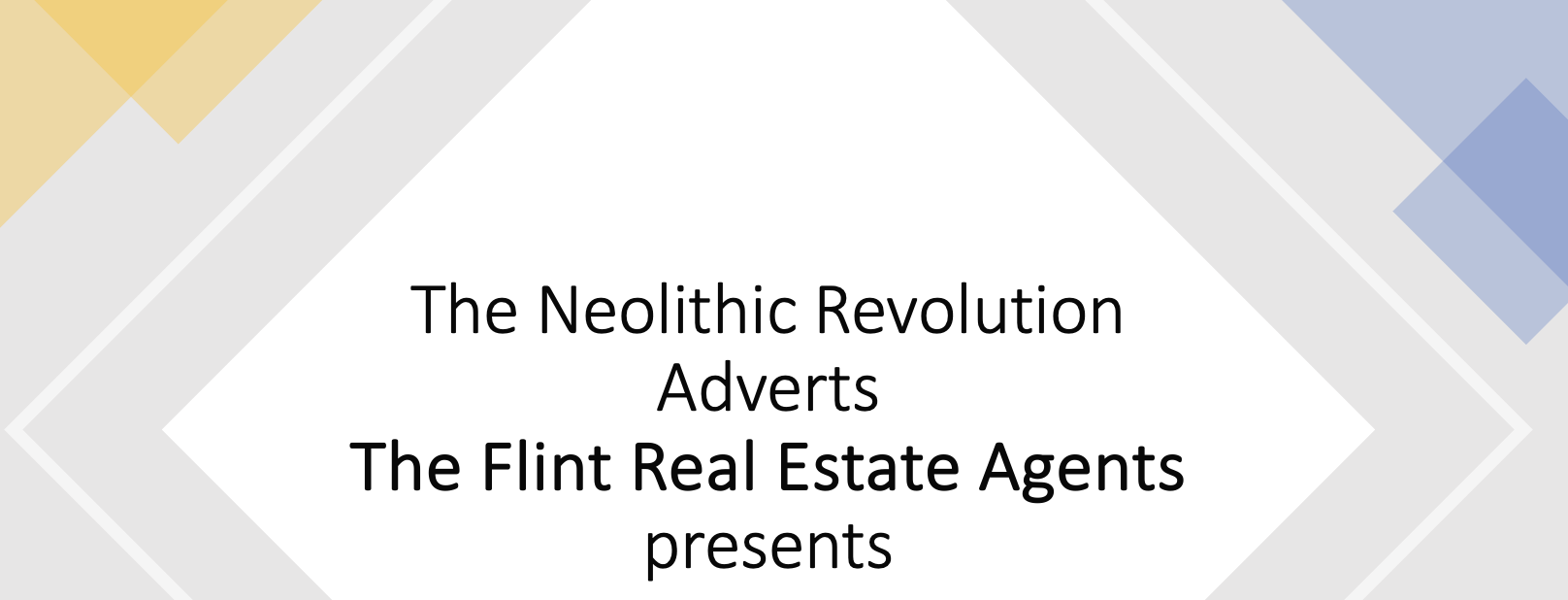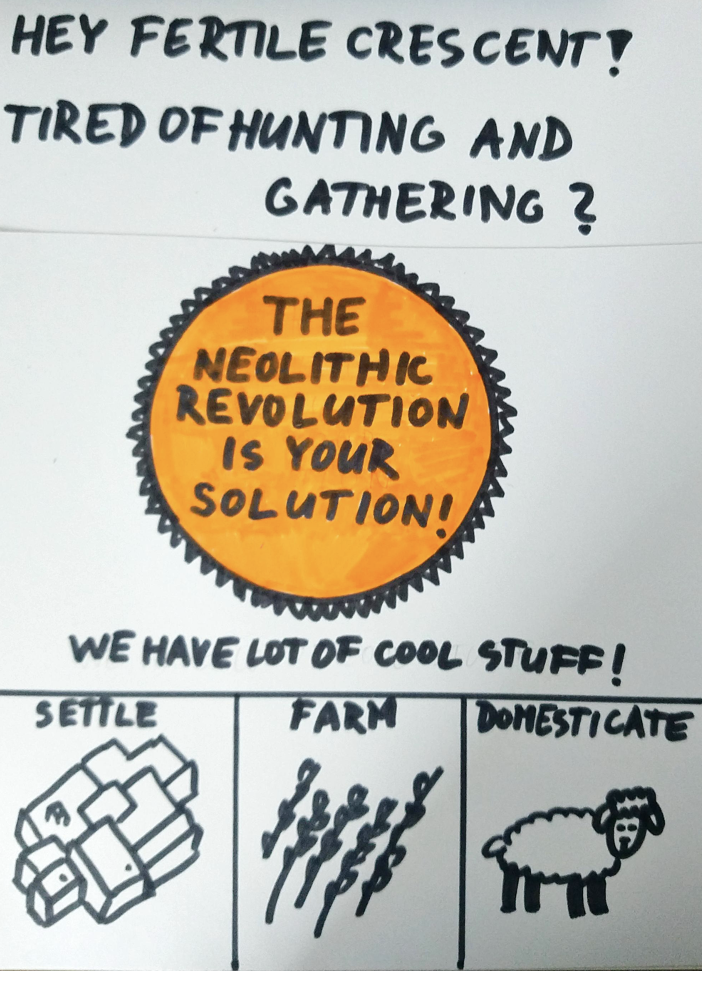Site blog
When Royals Met Rappers: An Interdisciplinary Look at Power, Influence, and Identity
This revision lesson was designed with interdisciplinarity at its core, aiming to help students revisit European royal personalities from the late Middle Ages to the Enlightenment in a way that felt relevant, creative, and intellectually challenging. Instead of relying on traditional recall, students were invited to explore history through the lenses of art, media studies, sociology, and contemporary culture.
After completing the unit on European royals, students worked in groups, each focusing on a different European country and its ruling figures. Their task was both analytical and creative: to translate historical power and personality into a visual analogy using modern-day artists, celebrities, or influential figures. The guiding question was simple but powerful: If this royal lived today, who would they be?
The results were as diverse as they were insightful. Some groups designed magazine covers, portraying monarchs as glamorous celebrities, complete with headlines that mirrored ambition, scandal, or authority. Others drew bold parallels between absolute rulers and modern-day rappers or gangsters, highlighting dominance, reputation, territorial control, and the projection of power. One particularly striking approach compared regent mothers and influential royal women to the Kardashian empire, focusing on dynastic strategy, image-building, family legacy, and behind-the-scenes influence.
What made this lesson especially meaningful was the creative phase. Together, we analysed the visuals and analogies in depth. Students explained why they associated certain historical figures with specific contemporary personalities, unpacking similarities in motivation, public image, authority, ambition, and influence. These discussions revealed a sophisticated understanding of both historical context and modern culture. The analogies were not superficial; they were rooted in thoughtful observations about how power operates across time.
Through this process, the lesson fulfilled its core aim: to revise royal personalities not just as names and dates, but as influential individuals shaped by—and shaping—their societies. Students reflected on who these royals were, what their position in society meant, and how extensive their influence was in a time when monarchy dictated almost every aspect of life.
At the same time, the lesson naturally bridged past and present. Students recognised that while royalty is no longer the sole authority defining how people live, power and influence have not disappeared—they have shifted. Today, artists, celebrities, entrepreneurs, and media figures often play a comparable role in shaping values, aspirations, and identity, particularly in the lives of young people.
By combining history with visual expression, popular culture, and critical discussion, this interdisciplinary lesson transformed revision into exploration. It encouraged students to see history not as distant or irrelevant, but as deeply connected to the structures of influence they navigate every day. In doing so, it reinforced a key historical insight: while the faces of power may change, the mechanisms behind it often remain surprisingly familiar.
During the COIL sessions on Volunteerism we asked participating students to provide brief inspirational speeches in connection with what they felt was close to their understanding of the concept itself. Students provided a wealth of great and touching responses in part by presenting their speeches and in part by sharing their ideas in the chat box of the platform used. Here is a number of contributions that reveal the maturity and seriousness of students with which they not only demonstrate their understanding of the issue but give us hope for the future as their dedication proves.
Ladies and gentlemen,
volunteerism isn't just about helping others. Volunteerism is more than just giving time and effort. It's about giving love and hope to the ones who cannot provide that for themselves. Volunteerism is the step towards a change, It's a life changing move. Imagine a world where everyone takes that one step. Think of the wonderful world where everyone offers a unique skill of theirs, whether it's helping an old lady, painting a picture full of colourful flowers for a young child or simply offering a smile. Together, we can make the world a better place. Be the reason why someone smiles today.
Nella Rašiová
Volunteering isn't just about giving; it's about connecting, restoring hope, and building a bond with people around you. Imagine the impact of sharing a meal, donating clothes, or simply offering a smile and a few kind words. When we reach out to help, we remind people that they're seen, valued, and not alone. Together, we can create a community full of compassion that strengthens us all. Volunteering is a powerful way to change lives – including your own.
Dorota Bednárová and Natalia Freus
My dear classmates,
I am sure we can all agree that it is always a tragedy when a child loses those who are closest to them. We know how precious our family members are to us and would not know what to do without them. I certainly do not. And because we are blessed with such close relationships, it's our responsibility to share a little bit of this happiness with those less fortunate ones. It doesn't take a lot to brighten up a day for a child and it is something we as students can do so easily. So please join me in this program for the children's home in this town to spread at least a bit of happiness to those who did not deserve to go through such a tragedy.
Anna Redajová
How much fun it is to play outside in clean parks, swim in clear beaches, or hike up beautiful mountains! Doesn't that sound amazing? But to keep our parks and beaches nice and clean, our nature needs a little help from heroes like you. By picking up litter, planting trees, or caring for the parks, each of you can be a hero for Algeria's nature. Picture yourself helping a tiny tree grow into a big, tall one—how cool would that be? So, let's team up and show our love for our beautiful Algeria. Grab a friend, join us, and let's make our country shine even brighter!
Meriem Harkat
Imagine a world where there is trash everywhere, most species are extinct, natural disasters are happening everywhere, and on top of that you are barely able to breathe. This is what the world will be like if we don´t change our habits, but not to lose hope we still have time to prevent such a future. If everyone makes one small change at a time we would be able to improve this future greatly. For example, separating can save millions if not billions of animals that is just one thing to imagine if we do more.
Šimon Mitaš and Katarina Malatinová
I would like to present an issue, one very close to many young people.
We live in a world where social media often paints a perfect picture of life but behind those screens many of us struggle with anxiety, depression and self-doubt.
Mental health is just as important as physical health, yet so many people suffer in silence.
As young people we face unique challenges and pressures that can sometimes feel overwhelming.
Taking care of our minds is vital for our overall well-being.
Many adults nowadays like to call this an issue of our generation, but it is not only that, but we can also see mental fights being fought across the centuries together with the question of where we belong.
Volunteering for those around you starts as a simple action, so don’t be afraid to speak up for people in your community and those close to you who may struggle to let their voice be heard and their fights seen.
Let’s create an environment where we can share our struggles without fear of judgment.
Nella Drobčová, Luci Sadloňová, Zsóka Sándor
On November 28, 2025 we organized the international online conference Networks 2025. Here my colleague Borbely Iuliana and I disseminated the results of our project.
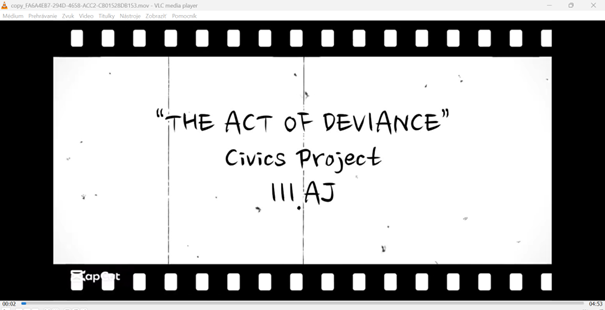





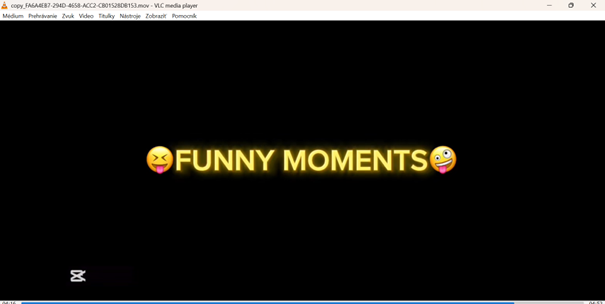

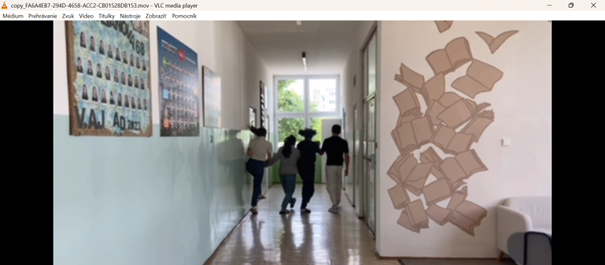
In one of our civic classes, I introduced an assignment that encouraged students to explore the topic of deviant behavior from both analytical and creative perspectives. They were given a choice:
- Analyze a case study involving a deviant act, or
- Create a short audiovisual project, such as a mini-film, illustrating a fictional example of deviance.
I was pleasantly surprised by the enthusiasm with which the students approached this task. Not only did I receive several well-structured and thoughtful case study analyses, but some students even decided to ask me tocollaborate on producing a short film.
Although the students granted me permission to publish their film online, I decided to take a more cautious approach regarding GDPR compliance. Instead of sharing the full video, I am including only a selection of still frames from the project—carefully chosen so that no student faces are visible.
We enjoyed not only the production process itself, but also the follow-up session where students presented their work and discussed the ideas behind it. The activity proved to be both educational and engaging, giving students a chance to deepen their understanding of sociological concepts through hands-on experience.
I hope this project might serve as inspiration for your own classroom activities as well.
I had the opportunity to introduce a creative lesson idea that combined an engaging seasonal theme—Halloween—with an important educational topic: human rights. The goal was to show students that even playful, imaginative contexts can help us explore meaningful real-world issues.
To support the lesson, I prepared a Halloween-themed worksheet featuring fictional scenarios involving students from our class. Each situation hinted at a potential violation of human rights. Students were asked to identify which specific rights were being violated and to determine which institutions or international documents could provide protection or assistance in each case.
The activity was both educational and enjoyable. Students were actively engaged, discussed the cases with enthusiasm, and demonstrated a solid understanding of the human rights principles behind the stories.
This creative approach not only made the topic more accessible but also showed that human rights education can be meaningful, relatable, and fun. I hope this idea inspires colleagues to explore similar interdisciplinary or thematic connections in their own classrooms.
I included the worksheet in the attachement for inspiration.
by E. Ciprianová

De Greef, L., Post, G., Vink, Ch., Wenting, L.: Designing Interdisciplinary Education: A Practical Handbook for University Teachers. Amsterdam University Press, 2017. 180 pp. ISBN 978 94 6298 476 9
Since the 1990s interdisciplinarity has been at the centre of interest of educationalists, teachers and curriculum developers across various academic backgrounds. The handbook under review significantly contributes to the promotion and development of an interdisciplinary mindset of teachers and students at university level of education. It comprises eleven chapters in which the team of four experts presents the reader with their ideas on interdisciplinary teaching and learning based on twenty years of experience at the Institute of Interdisciplinary Studies at the University of Amsterdam.
In Chapter 1 “Introduction”, the authors provide the rationale for interdisciplinarity in university education. So, what is an interdisciplinary approach all about? According to the authors, it appears as a response to an increasingly complex and interconnected modern world. Many contemporary global challenges concern all of us and require new workforce. Therefore, there is the need for raising university students as “integrative thinkers“ (p.10) with developed “interdisciplinary thinking skills” (p.12). Interdisciplinarity arises from the necessity to find solutions to complex, real-life problems by combining insights, concepts and methods from diverse disciplines. The proposed curriculum design is based on John Biggs constructive alignment (CA), an outcomes-based approach to teaching in which students take active roles in constructing meanings connecting new knowledge with their previous experience. The handbook is primarily intended for university teachers and curriculum developers who are interested in developing and implementing an interdisciplinary approach in their classrooms. Indeed, the following ten chapters in the handbook clearly and persuasively fulfil the objectives the authors state in the Introduction.
Chapter 2 “An overview of the development stages” describes major steps in the curriculum design process, which always has to start with the creation of an interdisciplinary team of academic staff members who are willing to cooperate and cross the departmental boundaries. Their communication and collaboration skills, flexibility, creativity, empathy, and commitment constitute the foundation for success. In this chapter, the authors offer a five-staged cyclical plan involving: the analysis stage (clarifying the impact and scope of the interdisciplinary programme), the design stage (formulating the learning outcomes), the development stage (defining teaching philosophy, didactic and assessment methods), the implementation stage (interdisciplinary teaching), and the evaluation stage (evaluating and adjusting the programme).
The definition of the notion of interdisciplinarity, in comparison to the related terms “multidisciplinarity” and “transdisciplinarity”, is the starting point of Chapter 3 “Unravelling interdisciplinary understanding”. The key characteristics of interdisciplinary education are the integration of insights and methodologies from several, often disparate, disciplines to explore the same subject. The clarification of the central concept is vital for educators to precisely formulate learning outcomes of an interdisciplinary programme or course. Above all, the understanding of the essence of interdisciplinarity serves as a precondition for putting the theoretical ideas into practice, which necessarily involves building three major skills: critical thinking, collaboration and reflection.
The next chapter, Chapter 4 “Developing the raw sketch” sets the framework for drafting an interdisciplinary programme and provides numerous examples, factors and questions to be considered by the development team. At this initial stage, the choice of a theme or a problem relevant to the newly-designed programme takes a particular significance.
Chapter 5 “Formulating interdisciplinary outcomes” makes the concept of interdisciplinarity in university education even more tangible. Basically, in this chapter the reader will find answers to two fundamental questions regarding the skills, attitudes and knowledge an ideal graduate should possess upon the completion of the programme and how these can be turned into measurable learning outcomes of individual courses. At the course level design, the selection of content, sequencing and specific learning activities all have to be carefully taken into account to identify what will be taught and how.
Chapter 6 “Embedding integration in the programme design” addresses the complexities of interdisciplinary curriculum development. In fact, the teams can face many challenges posed by the depth and breath of knowledge to be incorporated into teaching. This view is particularly important, and it is obvious that the authors do not try to create a false impression by presenting the synthesis of various perspectives during programme development as an easy task. On the positive side, they show the ways to cope with a variety of options and provide illustrative education formats to reach the balance between disciplinary knowledge and interdisciplinary training, and thus facilitate a successful integration and decision-making within teachersʼ teams.
Chapter 7 “Hiring and engaging faculty” leads the reader further into the process of developing interdisciplinarity in real classroom settings. Teachers are central to the effectiveness and success of any educational endeavour. In a similar vein, the authors claim that teachers “are the most important pillars of the programme” (p.92). The chapter focuses on the selection of interdisciplinary team members: highly motivated, knowledgeable professionals who possess not only knowledge of their fields but also courage to shift from their expert roles to become co-learners in the classroom environment. Other qualities, such as collaboration, enthusiasm, tolerance, and mutual respect, are indispensable in all interdisciplinary initiatives.
Chapter 8 entitled “Exploring the teaching philosophy and didactic methods” presents a statement of shared beliefs and practices as common ground for the clarification of “what the teaching team considers as good teaching” (p.110). In order to achieve interdisciplinary understanding, priority is given to pedagogical strategies promoting authentic experience, such as collaborative and problem based-learning (PBL), for example, case studies or community service projects with the potential to create connections among academia, science, and society.
Following the detailed account of designing and development of interdisciplinary curriculum, Chapter 9 discusses “Assessment of interdisciplinary learning outcomes”. In addition to outlining general criteria, the authors present four assessment forms (portfolio assessment, assessment of group work, assessment of interdisciplinary work from multiple perspectives, and student-centred assessment) which they consider most significant for evaluating the effectiveness of interdisciplinary teaching. Each of these forms merits and is given proper focus.
As the title indicates, Chapter 10 “Interdisciplinary teaching in practice” bridges the gap between curriculum design and the actual teaching of interdisciplinary classes. This chapter equips the reader with well-defined suggestions on how to create a safe learning environment and which techniques to use for enhancing interdisciplinary skills. Specifically, it focuses on reflective functioning (studentsʼ ability to reflect on their knowledge, needs and feelings), collaboration (studentsʼ ability to collaborate and communicate effectively within teams) and critical thinking.
Having discussed the implementation, the final Chapter 11 “Programme assessment and adjustment” calls attention to the evaluation of the programme. The assessment procedures, either formal or informal, serve two main purposes: to discover whether the intended learning outcomes have been achieved and to get feedback from teachers and students revealing whether their expectations have been met. Conducting the evaluation also provides opportunities for refining, adjusting and improving the quality of the interdisciplinary programme.
In sum, the handbook succeeds in its stated mission as all chapters in a logical progression demonstrate how “interdisciplinarity lies at the heart of academic practice” (p.8). The authors tacitly assume that the reader is not a complete novice to the field of educational design, but they offer very transparent step-by-step guidance and practical advice for university educators on how to implement an interdisciplinary approach in their teaching. A concise, easy-to-follow presentation of theoretical insights and best practices is the major handbookʼs strength. It contains as many as 27 different case studies. The reader will certainly benefit from frequent checking questions for reflection, brainstorming activities accompanying individual sections, and other interactive tasks attached to the chapters. The reader-friendly approach adopted by the authors is further supported by the visual organization, the overall layout of the handbook, and the inclusion of colourful tables and diagrams. To conclude, the reviewed handbook encourages teachers, regardless of their specialties or experience, to overcome the existing individualistic, isolated, silo mentality and replace the established frameworks with collaborative efforts that are equally important for both teachers and students.





During my recent visit to the Leonardo da Vinci Museum in Venice, I was deeply inspired by the genius of this Renaissance master. As a History and English teacher, walking through the exhibits, surrounded by Leonardo’s ingenious inventions and sketches, I felt an urge to bring his creative spirit into my classroom.
The moment I spotted the large-scale Vitruvian Man on the wall, an idea sparked — what if my students could step into Leonardo’s shoes? I immediately visualised and designed a lesson where students recreate his inventions on a smaller scale using cardboard, plaster, or textile or they trace the silhouette of a classmate to imitate the Vitruvian Man on a large piece of paper, blending art, science, and history. This hands-on activity will not only help them appreciate Leonardo’s genius but also connect historical innovation with their own creativity — a perfect way to make history come alive through language, imagination, and discovery. I left the museum determined to bring Leonardo’s inventive spirit into my classroom. His blend of art, science, and imagination sparked an idea for a creative lesson plan. Here it is:
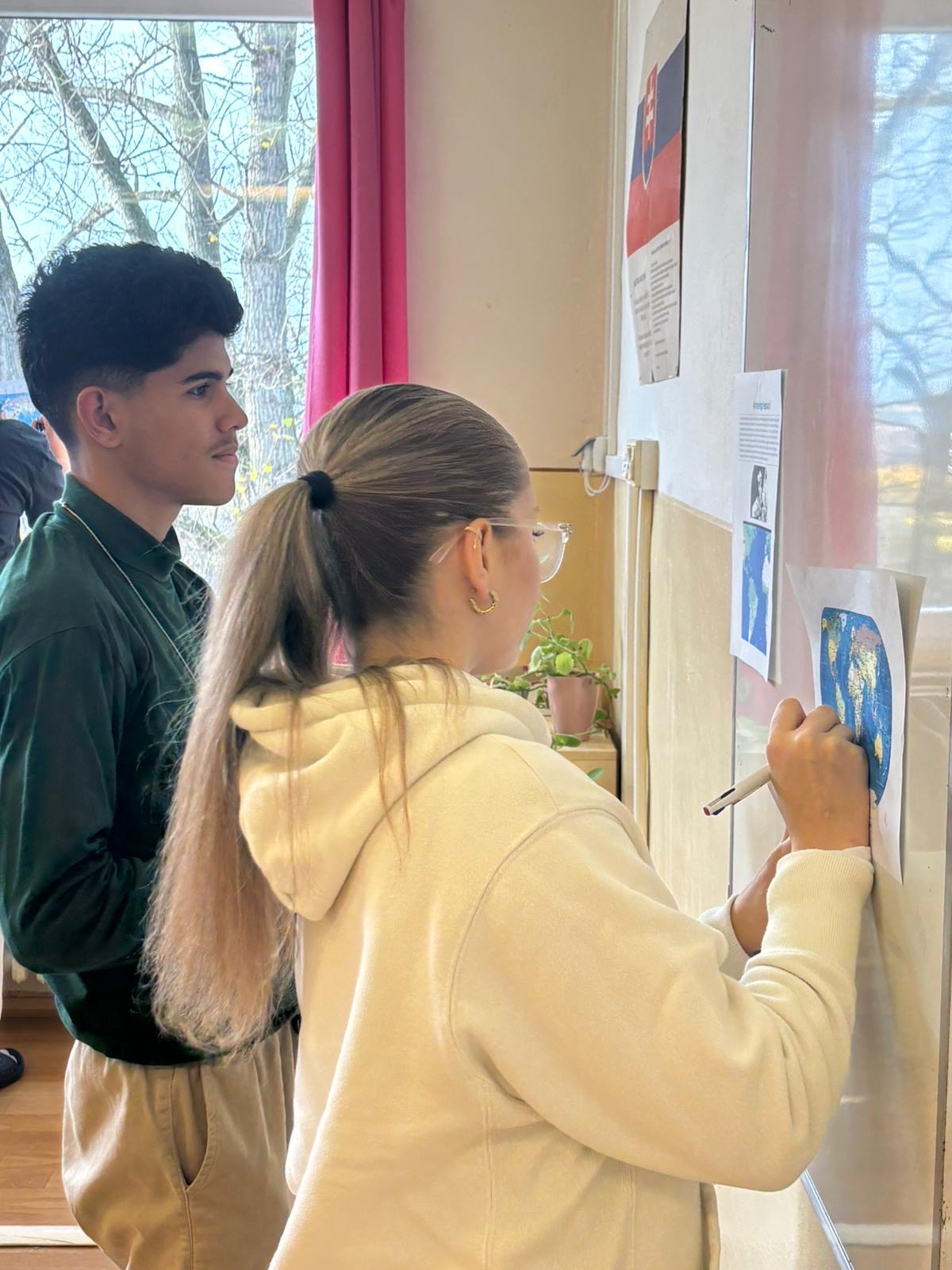
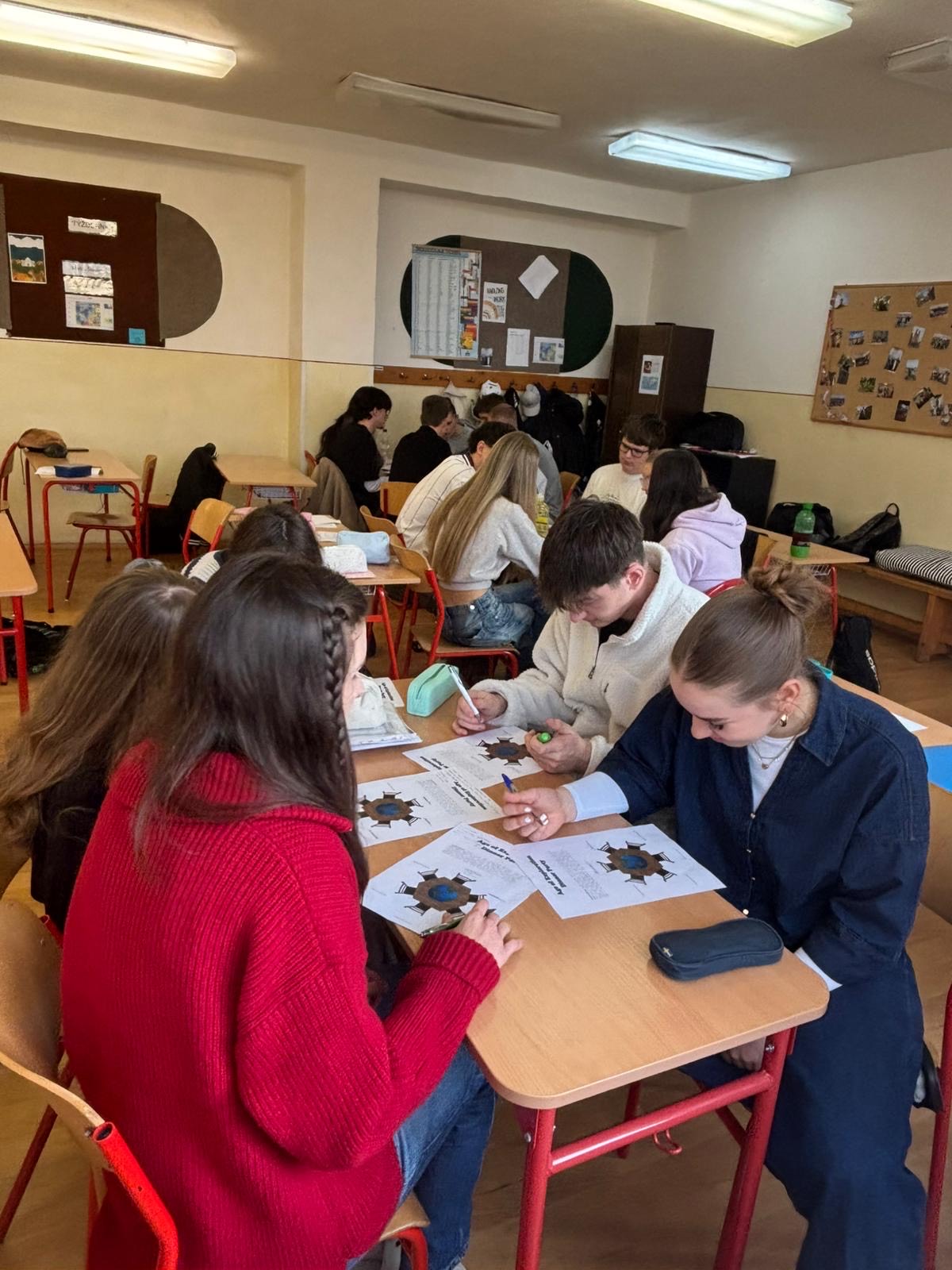
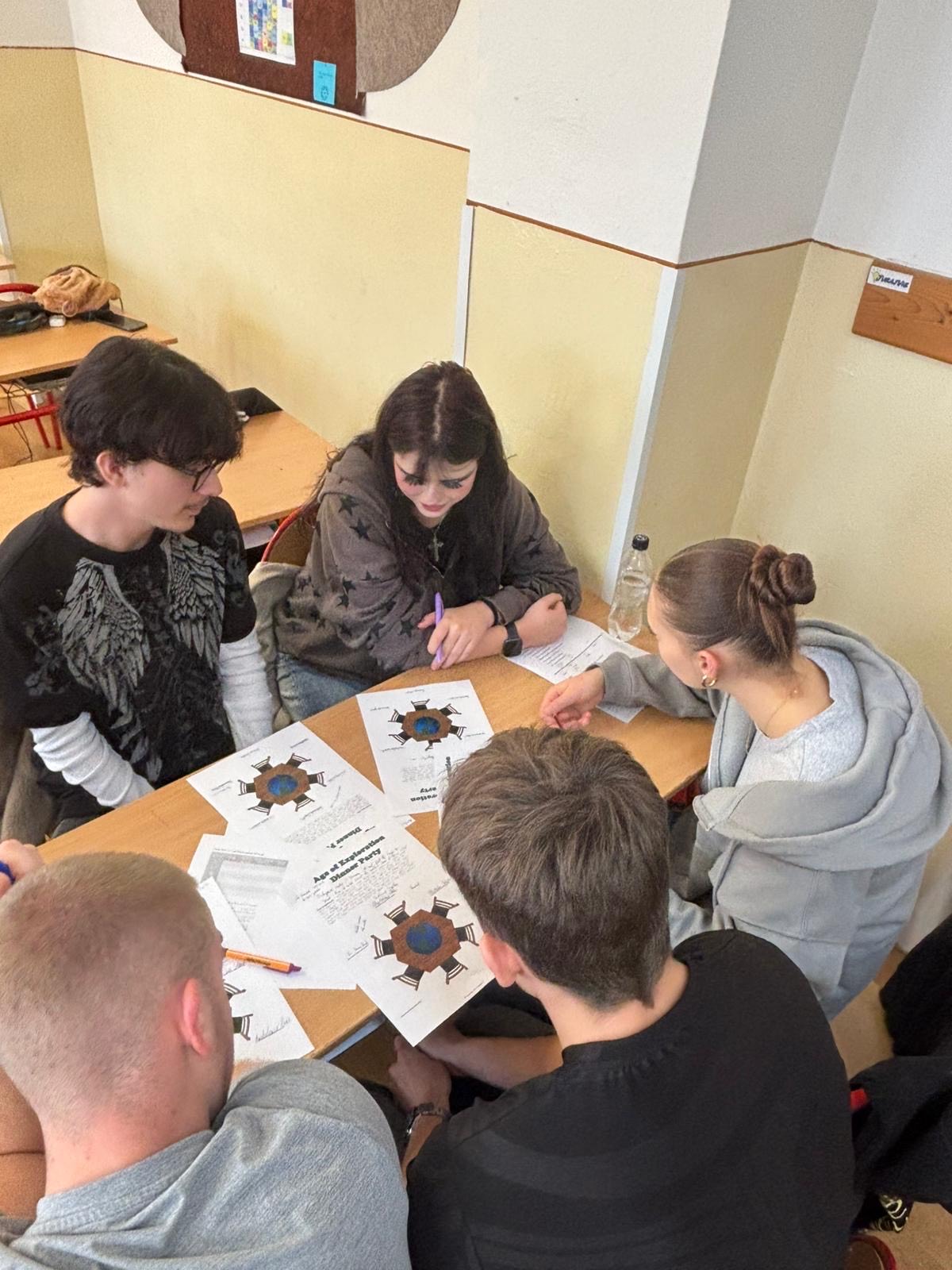
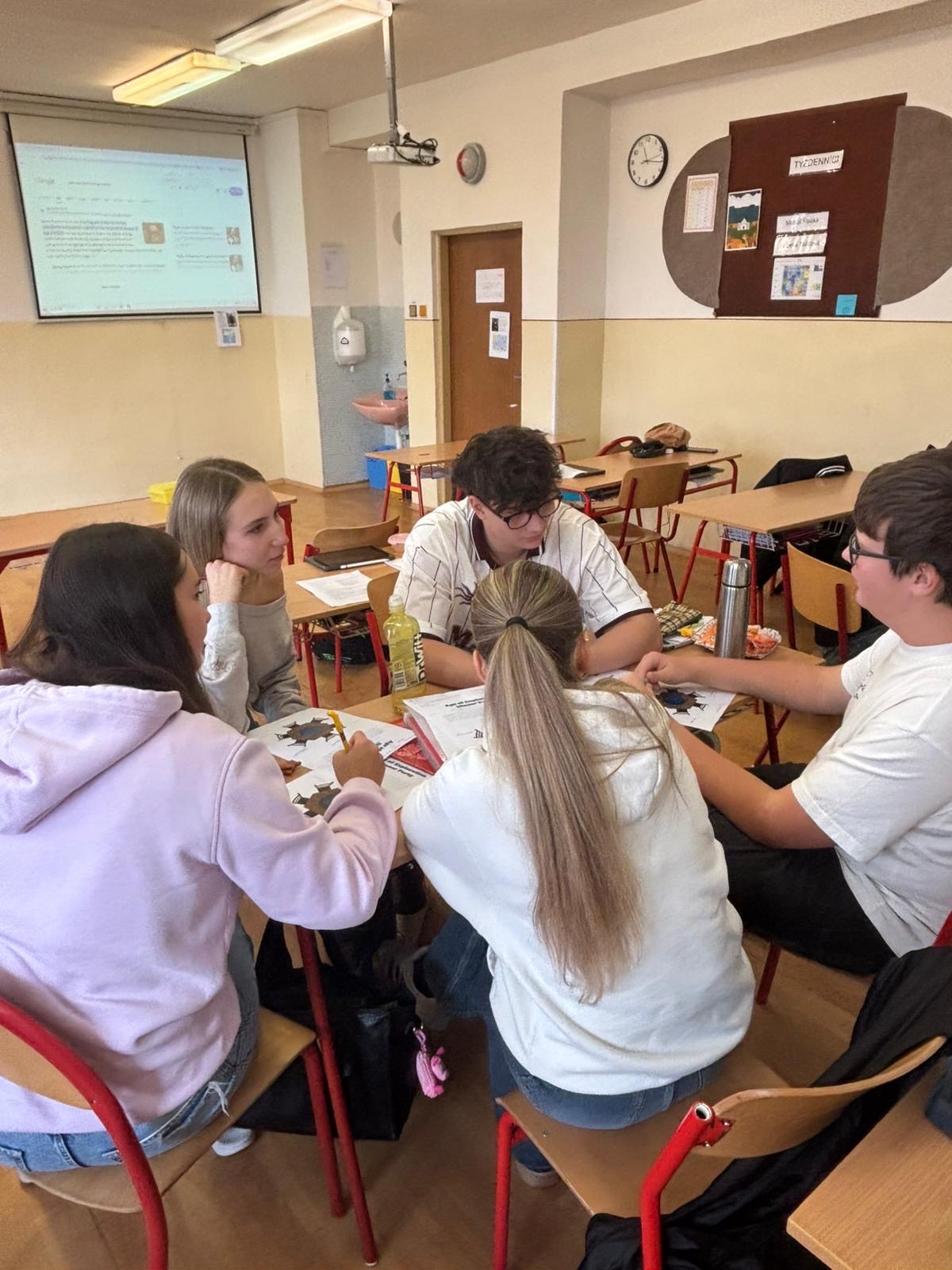

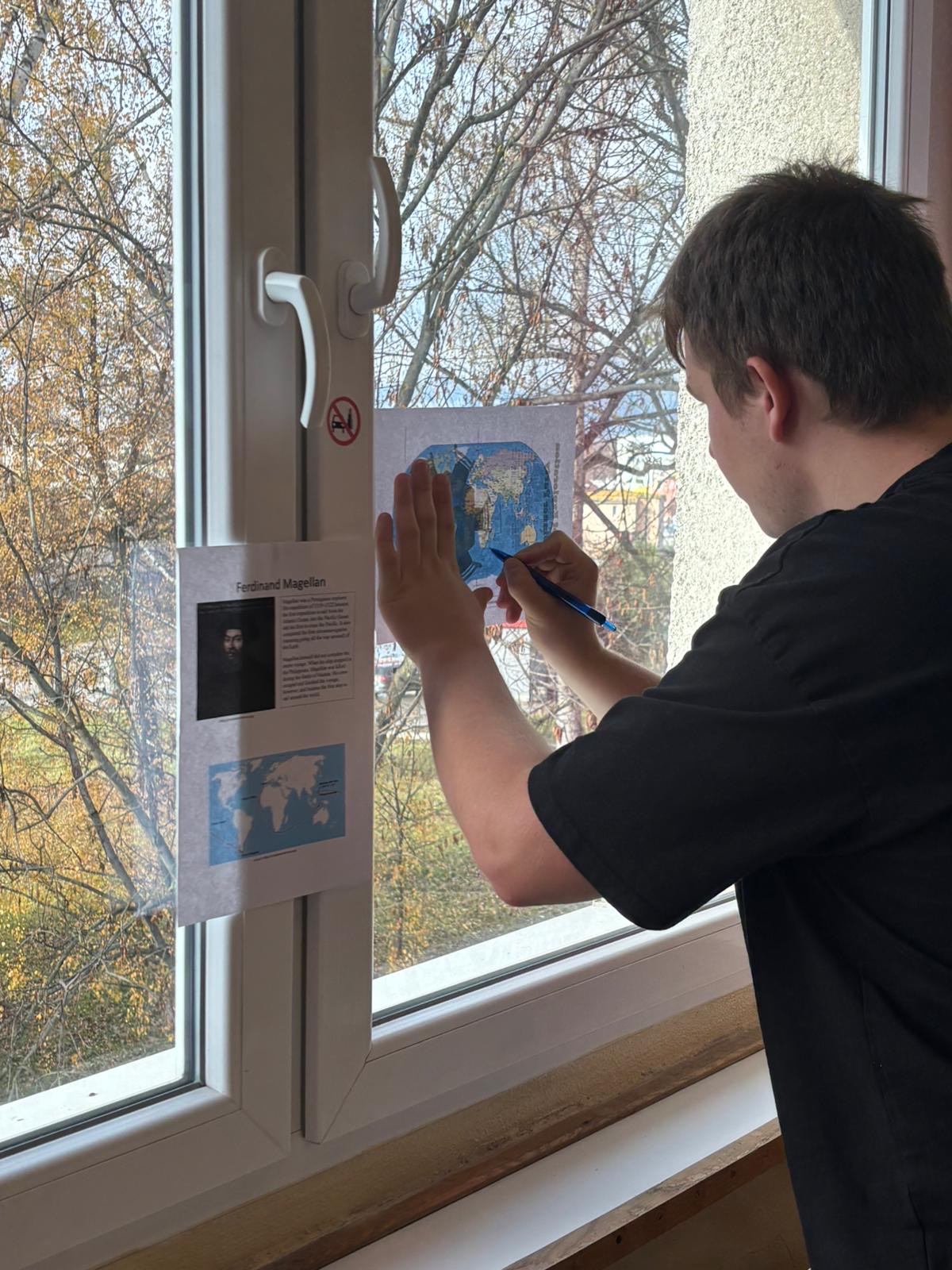

At the beginning of November 2025, I realised the Age of Exploration Dinner Party lesson with my third-grade students at the our bilingual grammar school. The activity was inspired by the interdisciplinary Fostin Erasmus project and adapted from its innovative textbook. Although the original lesson was designed for a 90-minute session, we worked within a 45-minute period. The main focus was on cooperation within small groups, encouraging students to combine their ideas, apply critical thinking, and use their geographical knowledge and skills creatively. The classroom quickly turned into a lively workspace where every student took responsibility for their role.
It was a truly student-centred experience—learners organised themselves efficiently and demonstrated that joy and motivation in learning naturally arise when they are given autonomy and trust. The only drawback was the lack of time for group presentations at the end. I would definitely recommend implementing this lesson in a full 90-minute block to allow for deeper discussion and sharing of outcomes. Overall, it was an inspiring and energising teaching experience.
Recently I had a wonderful seminar on Blues poetry and music baded on my project LP and the students' feedback was amazing.

